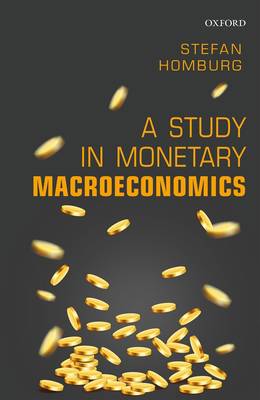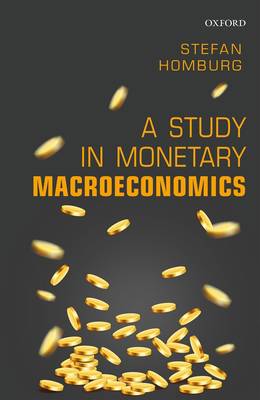
- Afhalen na 1 uur in een winkel met voorraad
- Gratis thuislevering in België vanaf € 30
- Ruim aanbod met 7 miljoen producten
- Afhalen na 1 uur in een winkel met voorraad
- Gratis thuislevering in België vanaf € 30
- Ruim aanbod met 7 miljoen producten
Zoeken
Omschrijving
The financial crisis of 2007 and the following recession present a major challenge to macroeconomic theory. The same holds true for exceptionally low interest rates during the recent years and for the puzzle that super-expansive monetary policies failed to produce high inflation. Approaches that focus on steady states, rational expectations, and individuals planning over infinite horizons, are not suitable for analysing such abnormal situations. A Study in Monetary Macroeconomics refines and improves mainstream approaches to resolve these puzzles and to contribute to a better understanding of monetary and fiscal policies. Using a rich institutional structure that includes features such as credit money, external finance, borrowing constraints, net worth, real estate and commercial banks, this timely study reduces rationality requirements to cope with its complex setting. It starts with a simple baseline model, deriving results from mathematical reasoning and simulations whilst adhering to the method of dynamic general equilibrium (DGE) with optimizing agents and fully specified models. Highly topical, A Study in Monetary Macroeconomics uses a unified theoretical framework to demonstrate that a DGE approach makes it possible to develop clean models that work outside steady states and are appropriate for answering macroeconomic questions of actual interest.
Specificaties
Betrokkenen
- Auteur(s):
- Uitgeverij:
Inhoud
- Aantal bladzijden:
- 218
- Taal:
- Engels
Eigenschappen
- Productcode (EAN):
- 9780198807537
- Verschijningsdatum:
- 13/09/2017
- Uitvoering:
- Hardcover
- Formaat:
- Genaaid
- Afmetingen:
- 155 mm x 236 mm
- Gewicht:
- 498 g

Alleen bij Standaard Boekhandel
+ 273 punten op je klantenkaart van Standaard Boekhandel
Beoordelingen
We publiceren alleen reviews die voldoen aan de voorwaarden voor reviews. Bekijk onze voorwaarden voor reviews.











